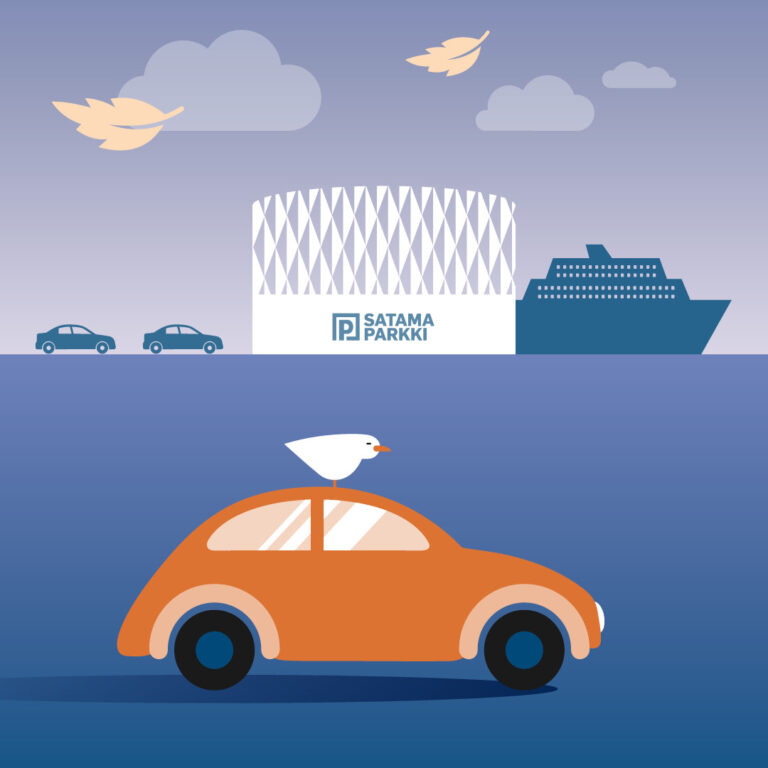
The EU supported projects
The European Union promotes the efficient transportation of people and goods in Europe. The EU also provides funding for projects focusing on environmental investments and the reduction of emissions. Finland is one of the EU’s top beneficiaries in terms of maritime transport projects, as Finland is highly dependent on maritime transport and at the same time has to contend with difficult winter conditions.
The EU wants to improve the quality of transport networks, harmonise transport-related standards and remove bottlenecks. The EU also supports the implementation of new technologies and automation related to transport control, the processing of goods and the various aspects of travel.
The goal is to create a seamless, efficient and safe transport network for cargo and passenger traffic on roads, sea routes and railways. Improvements in transport connections are expected to provide a significant economic boost to the entire EU area and play a major role in reducing transport emissions.

The Port of Helsinki’s EU-funded projects
The Port of Helsinki and its partners have also been granted EU funding for their investment projects aiming to improve the flow, efficiency and ecology of maritime transports.
| Project | Years |
|---|---|
| H2Deri@BSP | 2025 – 2028 |
| TWIN-PORT 1 | 2012 – 2015 |
| TWIN-PORT 2 | 2014 – 2020 |
| TWIN-PORT 3 | 2018 – 2023 |
| TWIN-PORT 4 | 2020 – 2023 |
| TWIN-PORT 5 | 2021 – 2025 |
| TWIN-PORT 6 | 2024 – 2027 |
| Deepening of the Vuosaari fairway | 2018 – 2024 |
| Hansalink 1 | 2014 – 2017 |
| Hansalink 2 | 2020 – 2024 |
| Cruise OPS | 2020 – 2024 |
| Green Cruise Port | 2016 – 2019 |
| Back from Black study | 2014 – 2016 |
- The Connecting Europe Facility (CEF) is a key EU funding instrument to promote growth, jobs and competitiveness through targeted infrastructure investment at European level.
- The CEF is divided into three sectors, of which the Connecting Europe Facility for Transport is the specialised funding instrument for transport infrastructure.
- The TEN-T (Trans European Transport Network) is a Europe-wide policy for transport projects funded by the EU. The TEN-T comprises two network ‘layers’: the Core Network to be completed by the end of 2030 and the Comprehensive Network to be completed by the end of 2050. The maritime dimension of TEN-T is the Motorways of the Sea concept, the aim of which is to improve maritime connections between ports.
- The technical and financial implementation of TEN-T is administered by the European Climate, Infrastructure and Environment Executive Agency (CINEA).
- The adoption of low- and zero-carbon maritime fuels in the Baltic Sea Region depends on the ability of seaports to accommodate hydrogen derivatives such as methanol and ammonia. Key stakeholders like port authorities, terminal operators, maritime fuel providers, and energy suppliers need an understanding of the market, technological developments, bunkering infrastructure, regulations, and public communication strategies. Co-financed by Interreg Baltic Sea Region, the H2Derivatives@BalticSeaPorts (H2Deri@BSP) project would address these needs through collaborative development of proof-of-concepts for hydrogen derivative fuels. Running from March 2025 to February 2028 under the leadership of Port of Hamburg Marketing, the project aims to enhance stakeholder capacity and accelerate the transition to sustainable maritime operations. Find out more: www.interreg-baltic.eu/project/h2deribsp/


